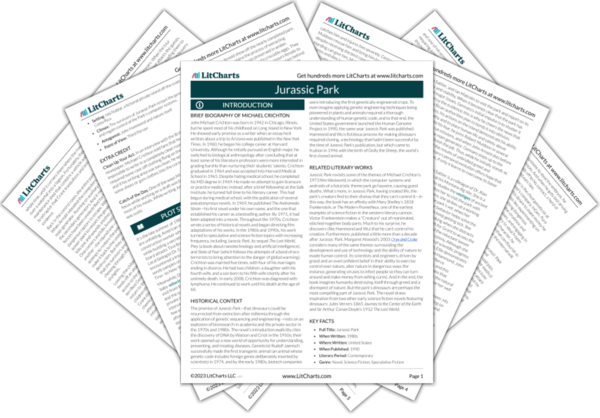With the disengagement of the park’s enclosure fences, the biggest test of humans’ ability to predict and control nature begins. They don’t know how the dinosaurs will react—whether external stimuli can modify their behavior, or even if some of them possess enough intelligence to recognize and capitalize on their opportunity to escape. Arnold hopes the dinosaurs will behave like modern animals which, having been shocked, would learn to avoid the fences. Muldoon on the other hand, worries about unpredictable behavior on the part of the dinosaurs or the humans. And he gets evidence for this almost immediately when he sees that Nedry has unexpectedly stolen the Jeep.
